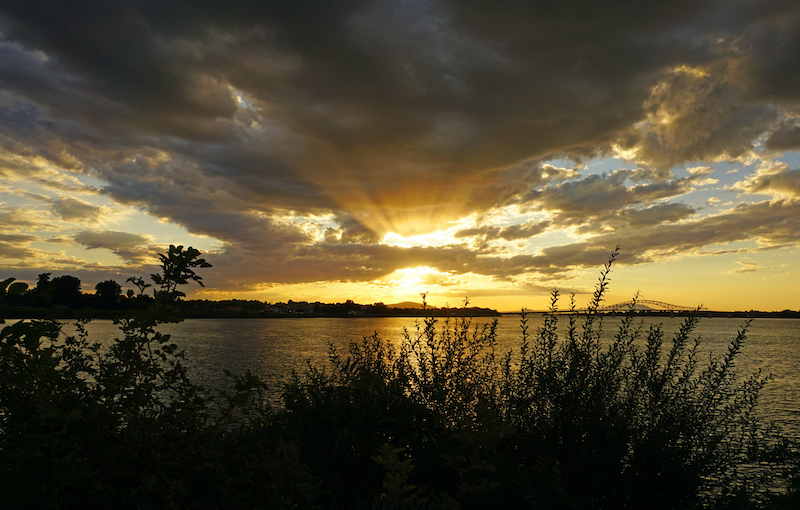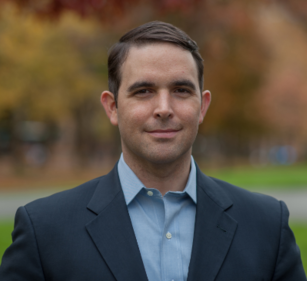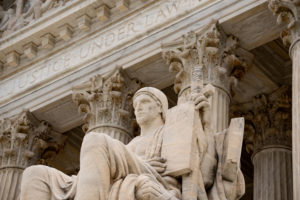
Judicial disregard of Native Nations’ ethnohistory frustrates the purpose of federal law protecting Native remains.
This is a story of courts and agencies interpreting regulations in a way that frustrates a law’s purpose and perpetuates the United States’ custom of undermining the rights of Indigenous Peoples.
This story begins more than 8,000 years ago with the death of a man who came to rest near present-day Kennewick, Washington. Fast-forward to 1996 when two college students discovered his remains along the banks of the Columbia River. The discovery ignited a 20-year dispute.
The human being at the center of this dispute became known as the “Kennewick Man” among scientists and colloquially otherwise. His kin regard him as the Ancient One.
Following the discovery of this man’s remains, several Tribes almost immediately moved to vindicate their rights under the Native American Graves Protection and Repatriation Act (NAGPRA). These claimant Tribes included the Confederated Tribes and Bands of the Yakama Nation and its Wanapum Band, the Nez Perce Tribe, the Confederated Tribes of the Colville Reservation, the Confederated Tribes of the Umatilla Reservation, and the Confederated Tribes of Warm Springs.
A group of scientists, however, insisted that the man’s remains could not be classified as Native American nor as culturally affiliated to a presently existing Indigenous group under NAGPRA. Eventually, the federal government became involved because this man’s remains were discovered on federal land.
Through years of litigation and administrative consultation, federal courts and agencies gave priority to western historical analyses and the word of the scientists who fought against the claimant Tribes. The federal judiciary attributed little value to the claimant Tribes’ ethnohistorical evidence under NAGPRA and its regulations, including their Indigenous oral histories.
But the federal government’s conclusions run contrary to the plain language of the relevant regulatory authority, undermining NAGPRA’s purpose.
NAGPRA provides for the repatriation of Native American human remains and sacred objects. In 1990, NAGPRA’s co-sponsor, Representative Morris Udall, noted that “for decades the skeletal remains of American Indians were removed from their burial sites, studied, catalogued, and relegated to the bins of museums and science.” NAGPRA’s purpose, he explained, was all about “respecting the rights of the dead, the right to an undisturbed resting place.”
Repatriations under NAGPRA require proof that the claimed remains are Native American and culturally affiliated with the claimant. In the Act, the U.S. Congress defined “Native American” as “of, or related to, a tribe, people, or culture that is indigenous to the United States.”
Corresponding regulations define “cultural affiliation” as “a relationship of shared group identity that can be reasonably traced historically or prehistorically between members of a present-day Indian tribe or Native Hawaiian organization and an identifiable earlier group.” Under these regulations, the federal government considers, by a “preponderance of the evidence,” ethnohistoric factors such as geographical indicators, folklore and oral tradition, and archeological data, among other evidence, when assessing cultural affiliation.
After the Ancient One’s discovery, the claimant Tribes quickly asserted their rights under NAGPRA. Through their own ethnohistorical record, those tribes understood that the Ancient One was their ancestor. They also supported their claims with archaeological and anthropological evidence beyond their own ethnohistories.
In 2000, the U.S. Department of the Interior found that the claimant Tribes established that the Ancient One was Native American and affiliated to their Peoples. Dissenting scientists objected in litigation based on their view that “certain skeletal traits did not resemble those of modern American Indians,” as a federal district court explained.
The scientists asked the district court to weigh the claimant Tribes’ ethnohistorical evidence—coupled with anthropological, biological, and archaeological evidence—against almost exclusively skull morphology evidence that would, years later, prove erroneous after conclusive DNA analysis.
The objecting scientists won. The magistrate judge reversed the federal government’s finding, concluding that the claimant Tribes and the United States failed to prove that the Ancient One was Native American. The magistrate judge also wrote voluminous dicta to reject that cultural affiliation had been established through any evidence, including ethnohistorical evidence.
The U.S. Court of Appeals for the Ninth Circuit affirmed the decision in 2004, dismissing the Tribes’ ethnohistorical evidence because of “concerns of authenticity, reliability, and accuracy,” and because the ethnohistoric record did not “show where historical fact ends and mythic tale begins.”
Both courts effectively ignored the Interior Department’s mandate that reviewing agencies consider linguistic, folklore, and oral tradition evidence—even though the relevant regulations require consideration of ethnohistory.
Following the court decisions, scientists received control of the Ancient One and subjected his remains to invasive scientific studies that are disrespectful of and antithetical to the claimant Tribes’ ways of life and rights under NAGPRA. Federal courts ignored what leading Indigenous scholars—such as Robert Hershey and his co-authors—have observed, and what is reflected in NAGPRA’s regulatory framework: namely that, just as “Western notions of authority evolved to require reliable knowledge to be contained in written documents,” Indigenous notions of authority “rely on the knowledge contained within people. In both cases, however, truth is only recognized if supported by accepted authority.”
After their unsuccessful litigation, the claimant Tribes had little hope that they could reclaim the Ancient One and finally lay him to rest. But this changed in 2014, when evolutionary geneticist Eske Willserslev offered to help the claimant Tribes by analyzing the Ancient One’s DNA.
Willerslev and his colleagues published a study concluding that the Ancient One “is closer to modern Native Americans than to any other population worldwide,” and specifically finding an affiliation to the claimant Tribes. Willerslev’s team also rebutted the analyses the courts relied on to deny the claimant Tribes’ their rights under NAGPRA.
Despite the insult of having to provide DNA samples to prove what the claimant Tribes had known all along, the study’s conclusions gave the claimant Tribes new hope. They now had definitive DNA proof linking them to their ancestor.
The claimant Tribes once again took their case to the United States and asked for review in light of this new evidence. In 2016, the federal government concluded that the Ancient One was Native American under NAGPRA after reviewing the DNA evidence—but it relied on the previous court decisions’ commentary on “cultural affiliation” under NAGPRA’s regulations to signal that there was still insufficient evidence to allow the Ancient One to come home. The federal government did not find that the claimant Tribes had satisfied the preponderance of the evidence standard through archaeological, anthropological, biological, and now conclusive DNA evidence—all of which confirmed the ethnohistory that is expressly prescribed under the relevant regulations.
Consequently, the Tribes turned to Congress and President Barack Obama in 2016 to pass legislation finally allowing the Ancient One to come home. In 2017, representatives of the claimant Tribes met in a location known only to them to finally lay the Ancient One to rest.
Unfortunately, Congress did not revisit the judiciary’s flawed interpretation of how cultural affiliation may be proved. As a result, similarly narrow interpretations may frustrate future efforts under NAGPRA to vindicate “the rights of the dead, the right to an undisturbed resting place.”
From 2014-2016, Sexton represented the Yakama Nation as one of the claimant Tribes in their efforts to repatriate the Ancient One. He consulted with and received the permission of the Yakama Nation to write and publish this analysis.
This essay is part of a series entitled Native Peoples, Tribal Sovereignty, and Regulation.




